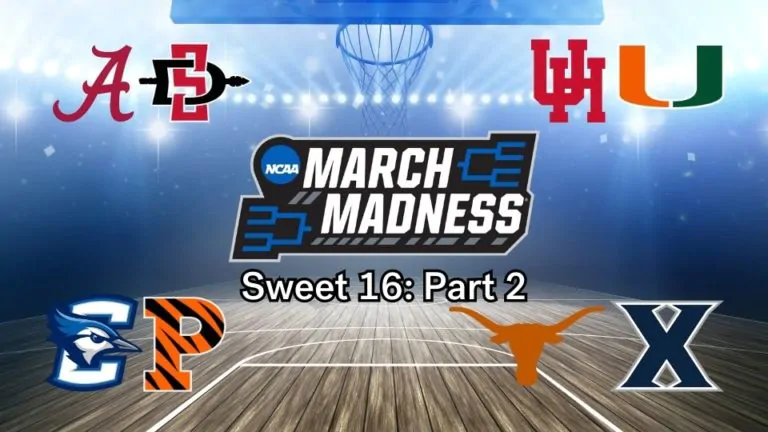As anti-trans sports discourse dominates headlines, be aware and educated about the strategy behind these developments. Take it from a former D1 athlete–there's more to the “Save Women's Sports Movement” than meets the eye.
It's been a rough few years for trans athletes. 2021 started with an onslaught of anti-trans legislation, ranging from “bathroom bills” that bar trans individuals from using bathrooms and locker rooms that align with their gender identity to the so-called “save women's sports” movement that introduced waves of legislation that prohibit or restrict trans women and girls from competing on female teams at varying levels of exclusion. In 2022, the efforts blazed on as Lia Thomas, a trans swimmer from the University of Pennsylvania, climbed the NCAA's Division 1 women's swimming rankings. Now, as of May 2023, 45 states have proposed anti-trans legislation to varying degrees, with 14 states signing these bills into law.
Last month, the state of Texas reentered the chat on the heels of the passing of House Bill 25 in January 2021–which affirmed that public school students must compete on teams that line up with their sex assigned at birth–as Senate Bill 15 passed through the Texas House. According to the Texas Tribune, if this bill passes through the Texas Senate and is approved by Governor Greg Abbot, it will expand the aforementioned restrictions on trans youth athletes at the K-12 level by working in tandem with HB-25 to cover all levels of public school sports programs in the state of Texas.
What a way to enter Pride Month.
Is “Fairness” At Stake?
Throughout the avalanche of anti-trans bills and laws that have made their way through various state legislatures, a consistent justification of these texts is that they promote “fairness” in women's sports, a sentiment expressed by Texas Representative Valoree Swanson when asked about her support of the SB-15. However, the bill's exclusion of male trans athletes calls this motivation into question: if fairness in women's sports is the goal, why bring male athletes into the conversation at all? Although the bill doesn't prohibit male athletes per say–and is dubbed a “Save Women's Sports Act”–by prohibiting “a student of a public institution of higher education who competes in intercollegiate athletic competitions to do so based on the student 's biological sex,” rather than making this prohibition gender-specific, the bill excludes trans men by default.
Not to mention that more productive steps toward fairness in women's sports include increasing media exposure, financial resources, Title IX compliance, and scholarships in women's sports programs at the collegiate level, none of which are included in any “save women's sports” bills like HB-25 or SB-15.
The idea that trans athletes threaten fairness in sports at all is also questionable as there have been 36 trans athletes in the history of collegiate sports, none of whom have been anywhere close to achieving the success that Lia Thomas did in 2022 while fully abiding with the NCAA's requirements at the time. According to Outsports, these athletes fall along many lines of the gender identity spectrum: “Some of them are trans men, some are trans women. Some have competed on a men's or nongendered team, though the majority have competed on a women's team.” So well before media coverage of Lia Thomas brought fairness in women's sports into question, trans women were competing on women's teams without uprooting the value of fairness in women's sports.
Related: How NCAA Spending Ignores Title IX
Or, let's entertain fairness debates for a moment–even if trans women do possess athletic advantages, the disproportionate focus on trans athletes compared to the minimal potential “threat” they pose to fairness is highly questionable. Only 0.6% of the US population aged 13-17 and only 5% of young adults aged 18-27–which are the primary ages for competitive sports–identify as trans. That's a tiny sample size given all the legal attention trans athletes have received for the last few years. Why not extend this energy to initiatives that would help fund and grow women's sports at all levels by ensuring Title IX compliance, protecting female athletes from sexual abuse by authority figures, and supporting funding initiatives to grow emerging women's programs? Women's sports don't need “saving,” but that's how you tangibly support female athletes.
The Political Strategy Behind Anti-Trans Athlete Rhetoric
In a political climate that is hotly divided, anti-trans bills achieve two primary purposes. First, unlike more complex initiatives that would provide more robust and sustainable support to women's sports programs like the above suggestions, anti-trans legislation focuses on downsizing who can compete rather than upgrading existing conditions–and it's much cheaper to exclude populations from sports than to invest in meaningful initiatives to ensure women's sports are successful, inclusive, and safe.
Second, although popular understanding might lead people to believe that LGBT acceptance and support tends to be divided on political lines with Democrats tending to favor more inclusive policies, the state-level reality is that the topic is much more bipartisan. This dynamic is evidenced by the fact that only five states–New York, Delaware, Vermont, Wisconsin and Massachusetts–have not yet proposed any anti-trans sports legislation (although all of these states lean left). When the topic shifts to sports, trans inclusion becomes even less divided by party lines–for instance, in Texas, 11 Democratic representatives voted in favor of SB-15 (although Rep. Jarvis Johnson, a Democrat from Houston, later tweeted that his affirmative vote “was a machine error,” and that his “vote will be fixed in the journal to reflect NAY”). Trans exclusion, especially in sports, is trending to an extent on both sides of the political aisle and the political impact extends far beyond the field of play as various organizations from the Los Angeles Dodgers to Target have wavered on their LGBT support in recent weeks.
Related Post: Notice of Proposed Rulemaking on Title IX Legislation: Where Do Trans Athletes Currently Stand Under Title IX?
Finally, regardless of anyone's opinions on trans inclusion in sports, the reality is that bills like SB-25 and SB-15 overwhelmingly target youth athletes–both cis and trans–and use them to score political points. I think if there's something that everyone can agree on, it's that children should be off limits when it comes to the political affairs of adults. However, the majority of current anti-trans discourse thrusts kids in the center of political crossfire without their knowledge or consent–and that is something worth fighting against.
Dr. Katie Lever is a former Division 1 athlete and current freelance sports writer whose work has appeared in Global Sport Matters, Sportico, Extra Points, Forbes, and other outlets. She is also the award-winning author of Surviving the Second Tier, a dystopian novel about the dark side of the college sports industry, available on AMAZON. Follow Katie on Twitter and Instagram: @leverfever.
Have an idea for a story or a question you need answered? Want to set up an interview with us? Email us at [email protected]
* Originally published on June 1, 2023, by Katie Lever, Ph. D







